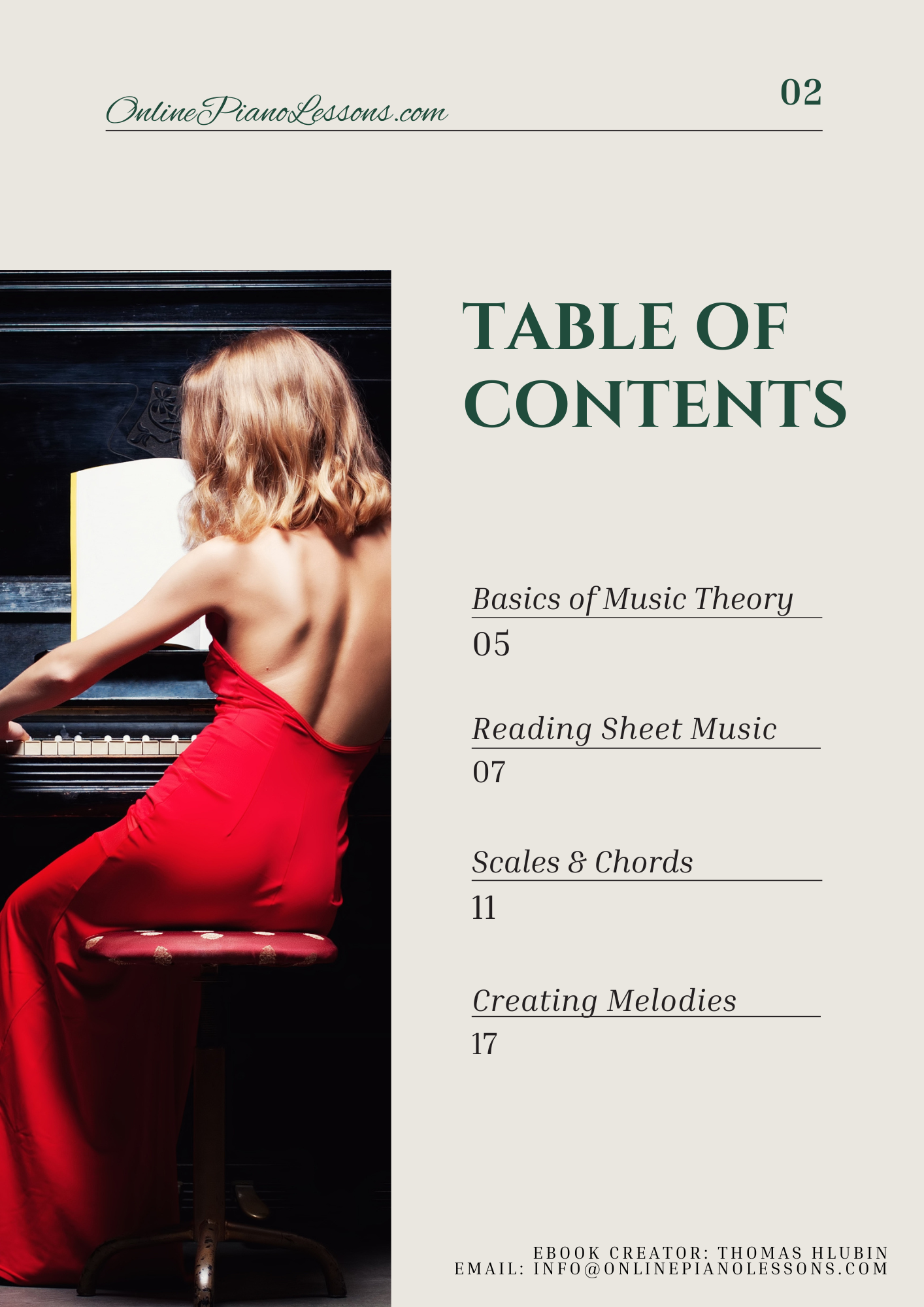Arabic music is known for its expressive melodies, intricate ornamentations, and deeply emotional tones. While Western music is largely built around 12 semitones per octave, Arabic music uses microtones—notes that fall between the keys of a standard piano. Despite these differences, you can still capture the essence of Arabic scales on the piano by using specific note patterns that mimic the sound and spirit of traditional Middle Eastern music.
In this guide, we’ll explore what the Arabic scale is, how it works, how to play it on the piano, its cultural background, and why it’s one of the most exotic and beautiful sounds you can bring into your playing.
Common Arabic Scales on the Piano
There are several Arabic scales that you can play on the piano, each offering its own mood and emotional color. Here are some of the most common ones and their note structures:
1. C Arabic Scale (C Hijaz):
C – D♭ – E – F – G – A♭ – B♭ – C
2. D Arabic Scale (D Hijaz):
D – E♭ – F♯ – G – A – B♭ – C – D
3. E Arabic Scale (E Hijaz):
E – F – G♯ – A – B – C – D – E
4. F Arabic Scale (F Hijaz):
F – G♭ – A – B♭ – C – D♭ – E♭ – F
5. G Arabic Scale (G Hijaz):
G – A♭ – B – C – D – E♭ – F – G
6. A Arabic Scale (A Hijaz):
A – B♭ – C♯ – D – E – F – G – A
7. B Arabic Scale (B Hijaz):
B – C – D♯ – E – F♯ – G – A – B
Each of these Arabic scales on the piano shares the same structure: the first interval (between the first and second notes) is a half step, followed by an augmented second. This interval pattern gives the scale its exotic, mysterious sound that instantly transports listeners to the Middle East.
What Are Arabic Scales?
Arabic scales, often referred to as maqamat (plural of maqam), are the building blocks of traditional Arabic music. A maqam is more than just a scale—it’s a musical framework that defines the mood, melody, and even the emotional expression of a piece. Each maqam has its own rules, characteristic phrases, and tonal centers.
On the piano, you can approximate Arabic scales by using scales that contain half steps and augmented seconds, which help produce that “Middle Eastern” sound. While the true Arabic scale system includes microtones (like quarter tones), most Western musicians use specific adaptations to replicate the feel on a standard keyboard.
How Arabic Scales Work
An Arabic scale is typically made up of a combination of two tetrachords (groups of four notes), separated by a whole tone. These tetrachords define the melodic shape of the scale.
For example, one of the most famous Arabic scales used on the piano is the Hijaz scale, which can be thought of as a Phrygian dominant scale in Western theory. Its distinct sound comes from the augmented second between the second and third degrees.
Hijaz Scale Formula:
1 – ♭2 – 3 – 4 – 5 – ♭6 – ♭7 – 1
This formula creates the instantly recognizable Arabic sound heard in Middle Eastern music, as well as in Western genres influenced by it (such as flamenco or film scores).
How To Find Arabic Scales on the Piano
To play an Arabic scale on the piano, start by identifying the root note. From there, apply the Hijaz interval pattern:
Half step – Augmented second – Half step – Whole step – Half step – Whole step – Whole step
For example, to play the A Arabic scale:
- Start on A
- Move a half step to B♭
- Move an augmented second (three half steps) to C♯
- Move a half step to D
- Continue with E, F, G, and back to A
Once you internalize the sound of this pattern, you can transpose it to any key.
Why Arabic Scales Are Important
Arabic scales on the piano open the door to a world of rich musical expression. They allow pianists to explore sounds that go beyond the boundaries of Western harmony and tonality.
Here’s why they matter:
- Emotional Depth: The intervals in the Arabic scale evoke longing, tension, and passion.
- Cultural Connection: Learning Arabic scales helps bridge musical traditions between East and West.
- Improvisation Potential: These scales provide incredible material for improvisation, especially in jazz, fusion, and cinematic music.
- Unique Compositions: Using Arabic scales can make your piano compositions sound exotic and captivating.
Even though the piano can’t produce microtones, the Arabic scale captures enough of the flavor to bring Middle Eastern expression into your playing.
The Cultural and Historical Context of Arabic Music
Arabic music has a history that spans over a thousand years, deeply rooted in the cultures of the Middle East, North Africa, and parts of Asia. The system of maqamat developed as both a theoretical and spiritual art form, closely tied to poetry, dance, and storytelling.
Traditional Arabic instruments like the oud, qanun, and ney use microtones that the piano cannot reproduce. However, the Hijaz and Nahawand scales—two of the most popular Arabic scales—translate beautifully to the piano, allowing Western musicians to experience the essence of this ancient tradition.
Tips For Playing Arabic Scales Expressively
When playing Arabic scales on the piano, focus on expression rather than speed or technicality. Here are a few tips:
- Use the sustain pedal to let the notes blend and create a mystical sound.
- Add ornamentation, like grace notes or quick slides, to mimic the fluid style of Arabic instruments.
- Experiment with dynamics, playing softly at first and then gradually increasing intensity.
- Try improvising with the Arabic scale over a drone note, such as the tonic, to capture the feeling of traditional maqam improvisation.
How Arabic Scales Influence Western Music
The Arabic scale has had a profound influence on many genres of Western music. Film composers often use the Arabic scale to create a sense of mystery or ancient beauty, while rock and jazz musicians use it to add an exotic flavor to their solos.
You can hear elements of Arabic scales in flamenco, gypsy jazz, and even certain classical pieces that explore non-Western tonalities. By mastering the Arabic scale on the piano, you open yourself up to an entire world of fusion possibilities.
Conclusion
Arabic scales on the piano are a fascinating bridge between worlds—merging the structured beauty of Western harmony with the soulful, expressive nature of Middle Eastern melody. Whether you’re a composer, improviser, or just a curious pianist, exploring these scales can unlock an entirely new dimension of musical creativity.
FAQ
1. What is the Arabic scale on the piano?
The Arabic scale, often based on the Hijaz mode, is a seven-note scale that features a distinctive half step followed by an augmented second. It produces the characteristic sound of Middle Eastern music.
2. Can you play true Arabic music on the piano?
Not exactly, since Arabic music uses microtones that the piano cannot produce. However, by using Arabic scales like Hijaz, you can closely approximate the sound and style.
3. What does the Arabic scale sound like?
It has a mysterious, exotic, and emotionally charged sound—often associated with desert landscapes, ancient cities, and rich cultural storytelling.
4. Are there different types of Arabic scales?
Yes. The Hijaz, Nahawand, Kurd, and Rast are among the most common maqamat. Each has its own character and emotional feel.
5. Why should I learn Arabic scales on the piano?
Learning Arabic scales enhances your musical versatility, deepens your cultural understanding, and allows you to create more emotionally powerful and unique pieces.







 Hi, I'm Thomas, Pianist Composer,
Hi, I'm Thomas, Pianist Composer,  I love playing piano, creating new melodies and songs, and further developing my online piano course and making updates/additions to my site OnlinePianoLessons.com!
I love playing piano, creating new melodies and songs, and further developing my online piano course and making updates/additions to my site OnlinePianoLessons.com!  Now that is what I call fun!
Now that is what I call fun!
